
For 35 years she drew still‐life inspiration from her home and gardens near Ballarat. Now, at 77, artist Criss Canning has a new studio, a new book – and a new life.
Words Dellaram Vreeland
Photography Eve Wilson
ABOUT twice a year for almost three decades, Criss Canning has driven the three-hour round trip from her home in Ballarat, in Victoria’s goldfields region, to Pomonal, a village set against the backdrop of the Grampians National Park in the state’s west. It’s a pilgrimage the acclaimed still-life painter makes to visit two families who grow native flora, from banksia to gumnuts, grevillea to gum flowers, which she picks carefully and carries home to use as studies for her paintings.
“It was the gift of both picking beautiful, pristine specimens that had not been in florists’ fridges and crushed, plus I could pick beautiful-shaped branches. As I was picking, I was composing what I was going to [paint]. It was a real, true gift.”

Then, in February 2024, bushfires tore through the Grampians town, destroying more than 40 homes. “Both [of the families] lost their houses and everything,” Canning says. “Half of Pomonal burnt to the ground.”
When Canning made her regular trip to the town of just over 300 people, she was shocked by what she saw. “I was sitting on the road in my car and on either side of me there was nothing except grey ash as far as my eye could see. It just really shook me,” she recalls, “that level of devastation.”
As she was about to leave town, Canning noticed a blackened banksia bush on a property and asked permission to retrieve a few of its gnarled cones. “All the way back, I’m thinking, how can I use this in a way to honour what has happened there and my friends in that area?”
She asked her son to drag her largest easel out of the garage and set to work. For two months she thought of nothing else. “I’d say to [my husband], I can’t remember doing it,” she says of the intensity of her concentration. The result was the largest work Canning has completed in more than 25 years and, she believes, one of her most important. Titled After the Fires – Pomonal 2024, it’s a haunting yet hopeful image of destruction wrought and the regeneration to come.
“I’ve been moved by this painting,” Canning admits. “The cones were amazing. They were so extraordinary after the fire. That regeneration process – the pods had opened, dropping their seed, so there was going to be new life from all this sadness and grief of devastation.”
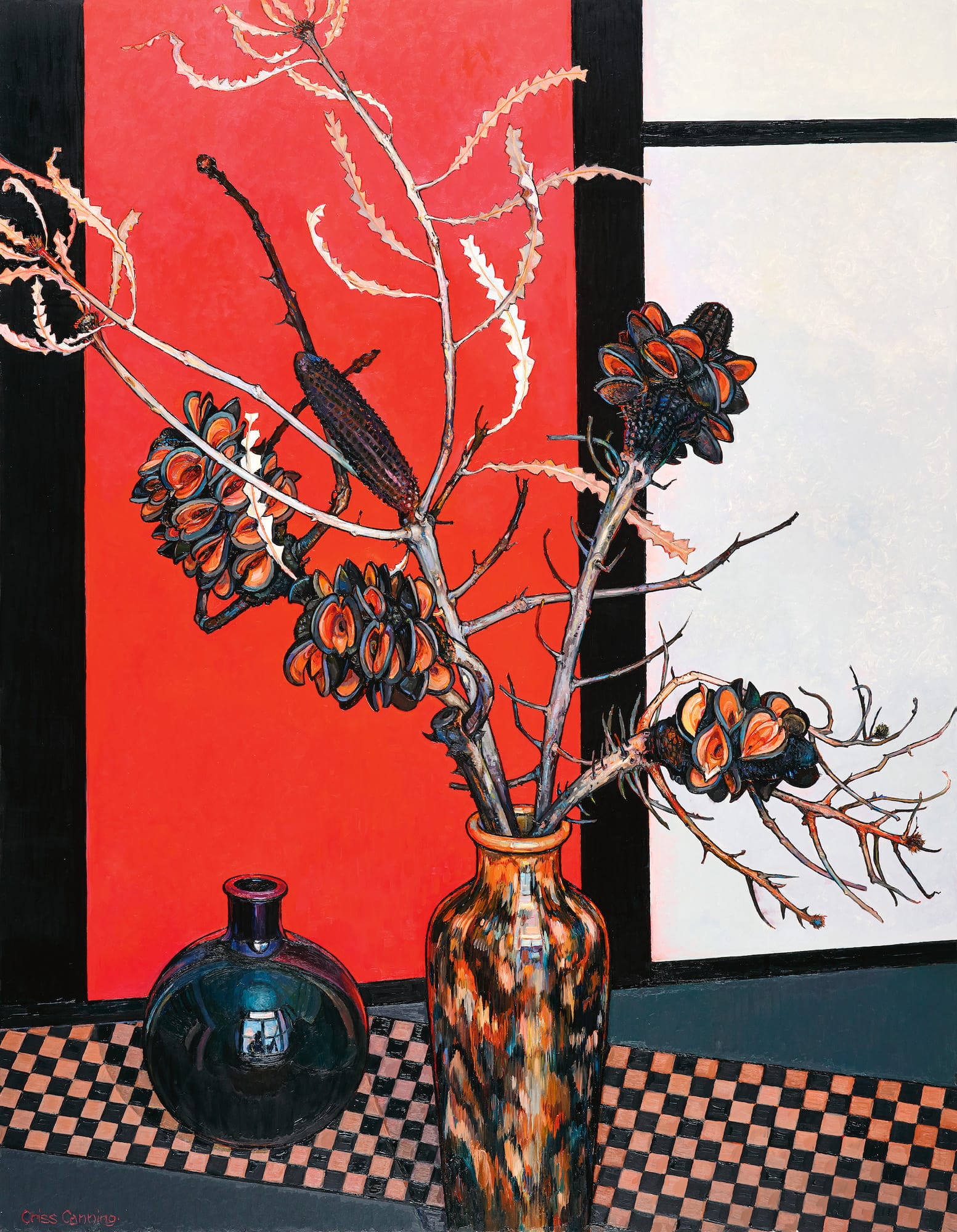
After the Fires was auctioned for $200,000 at the Melbourne gallery Smith & Singer in November, where it will be shown as part of her solo exhibition in early 2025.
“I was so involved at some deep, deep level with that work,” Canning says. “Of course, those families who lost their homes had been so generous to me, incredibly generous. They always said, just go and take whatever you want. And then to just see that they’d lost everything, it was completely heartbreaking.”
For Canning, anything that adds a layer of beauty to her life and the lives of others is worthwhile. Perhaps it’s for this reason she has continued honing her skills for almost 60 years. One of Australia’s finest still-life artists, her work is held in collections at the National Gallery of Australia, the Art Gallery of New South Wales, the Art Gallery of Ballarat, Castlemaine Art Museum, and in museums and private collections worldwide.
Over the years Canning has studied flowers, textiles and decorative objects, most drawn from her immediate surroundings, particularly her charming 1860s farmhouse, Burnside, and the adjoining nursery and gardens, known as Lambley. This landmark property in Ascot, a suburb on the northern outskirts of Ballarat, has been “hugely inspirational” for the artist.

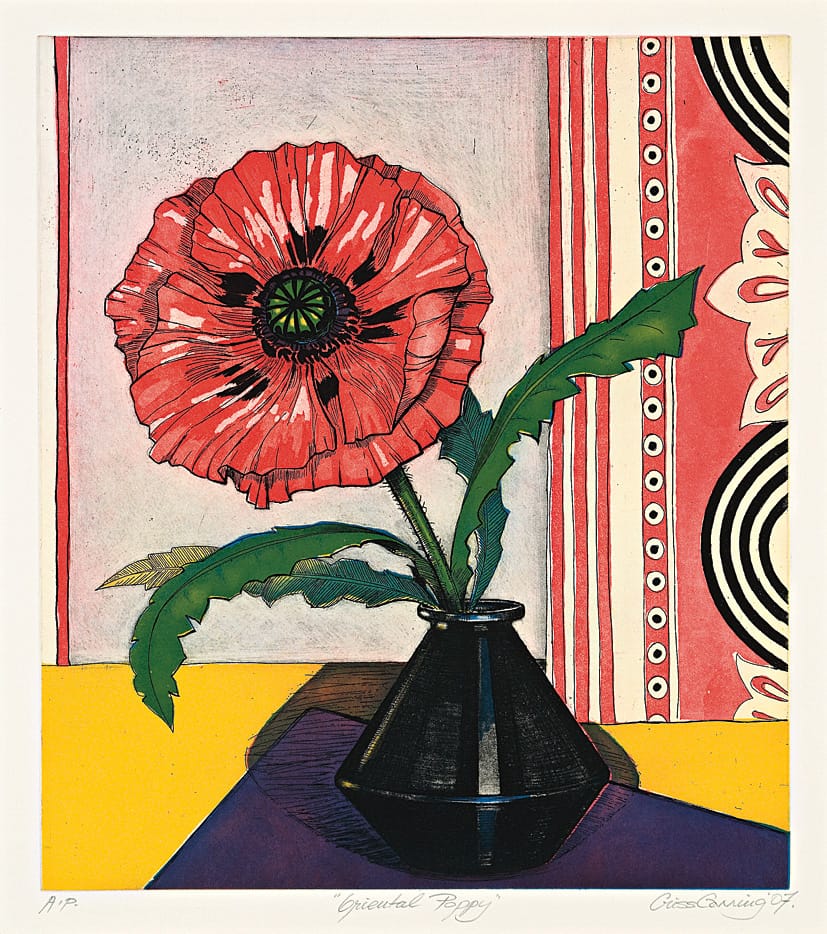

Wild Poppies, 2012; Oriental Poppy, 2007; Winter Vegetable Garden, Burnside, 1995. Artwork by Criss Canning.
Her most frequent studies are of poppies, irises, sunflowers and native flora – in particular, banksias. Canning says she always paints from live material. “That is very deliberate,” she says. “I think working from a living thing, you get something extra. You have a much deeper respect for what you’re working with.”
She is also an avid collector of jewel-toned glassware, which she sources from antique and thrift shops across the world. “My cases come back with ‘fragile’ written all over and a prayer,” she laughs. It apparently took two people seven days to pack and deliver her ever-expanding collection of glass, china and metal artefacts to her Lambley studio. Glassware has become an artistic signature, along with tea sets, shells and vintage kimonos.
Canning and her husband, David Glenn, bought Lambley 35 years ago and, in a labour of love, transformed the 40-acre property into one of the region’s best-loved landmarks and a benchmark in sustainable gardening.
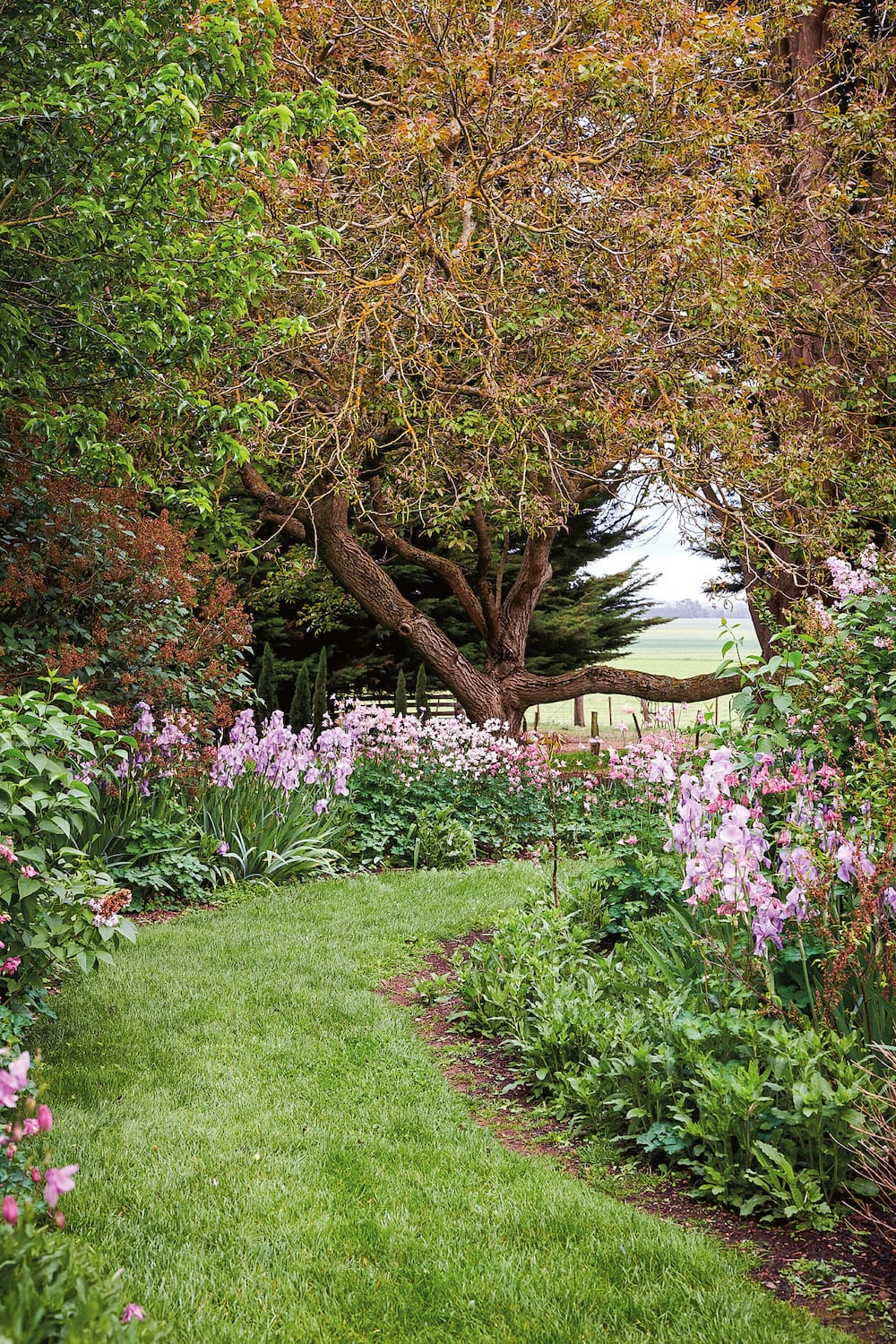
“It was a big project,” Canning says. “It was very raw, you know, lots of fauna in the house as well as outside. And, of course, the gardens were non-existent. Basically, there were some weedy rose bushes and gum trees up the drive that were never going to work. It’s been huge and of course it’s happened gradually.”
Glenn’s father was a gardener in the horticultural village of Lambley in Nottinghamshire, after which the Ascot gardens were named. His passion for
plants, in particular flowers, and his knowledge of dry-climate gardening has made the nursery and gardens an inspiration, not just for Canning but visitors from around the world.
One of our family’s most treasured photos was captured under the garden’s avenue of towering ornamental pears, where my children and their cousins had their photograph taken – a keepsake then gifted to their grandmother.
Canning is grateful when I share this anecdote with her. As Galah goes to press the property is on the market, and she’s in the process of letting go. It wasn’t an easy decision, but she’s hopeful Lambley will continue operating in its current form.
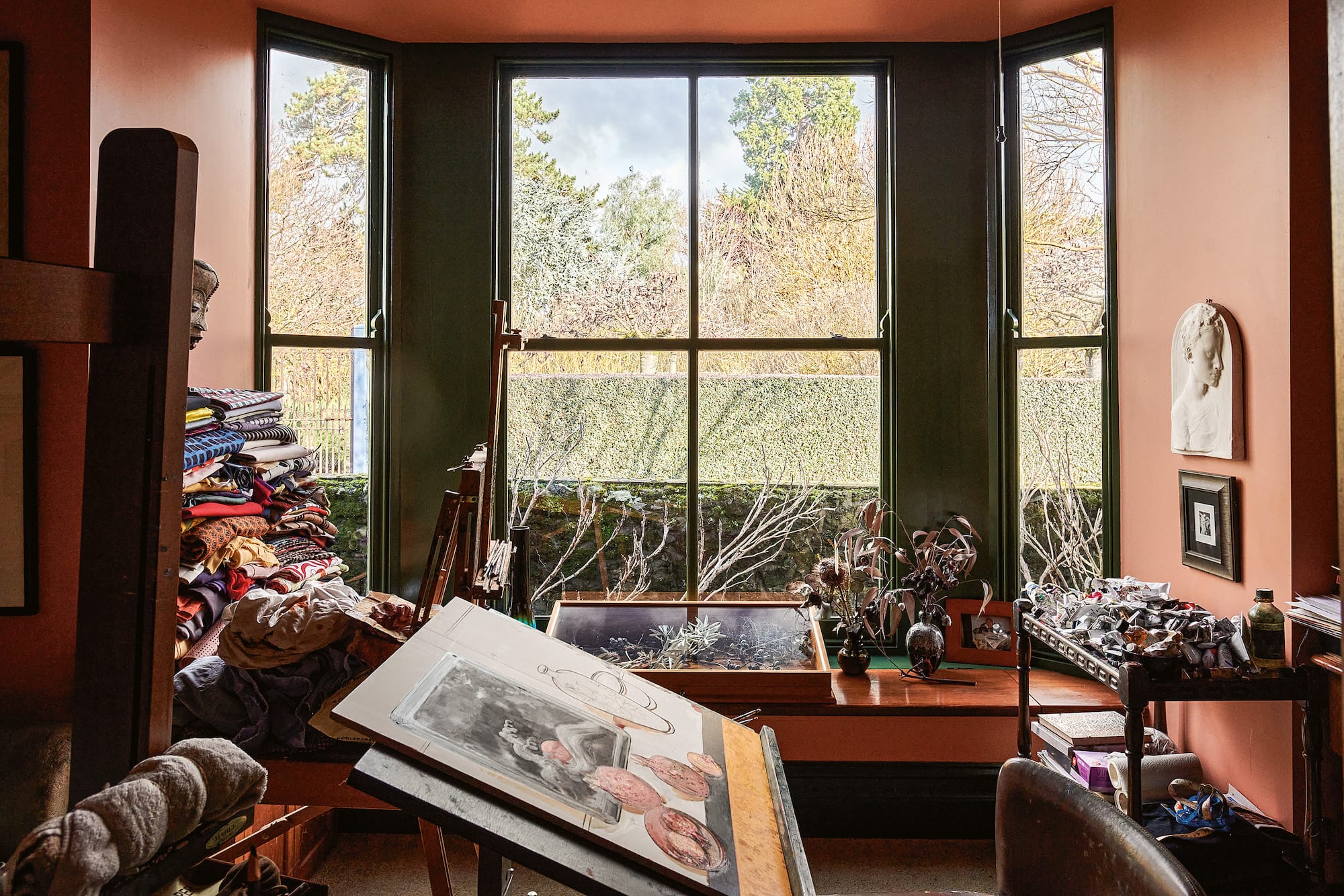
“It’ll be a bit like a painting,” she says. “You know, we’ve created this beautiful place and so much has gone into it. It’s going to be hard to say goodbye. But I think it’s really important, especially as we’re getting older,” says Canning, now 77.
“People want to cling to what’s familiar. It’s been 35 years of wonderful times. But we’re now both very peaceful with the decision.”
A new monograph, The Paintings of Criss Canning, captures the beauty of the old home and the gardens at Lambley, showing how intimately the gardens in particular have inspired Canning’s work for decades. It’s a lifelong study in art imitating life.
“[Lambley has] been quite a legacy,” Canning admits. “I’m not saying there won’t be days where we’ll feel like [we are missing] that garden or the house. I think that’s natural. We feel very privileged and blessed to have had the time we’ve had there.”
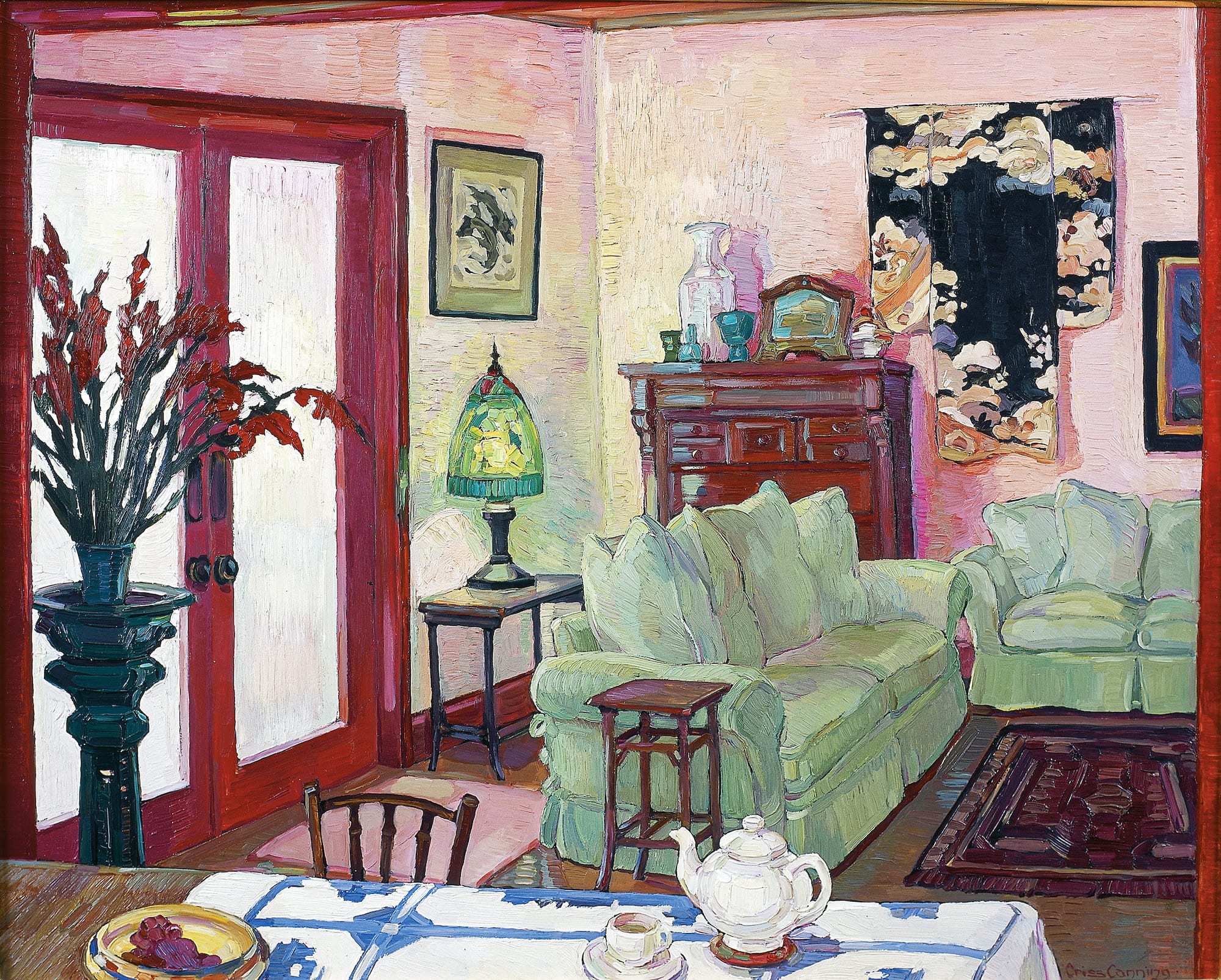
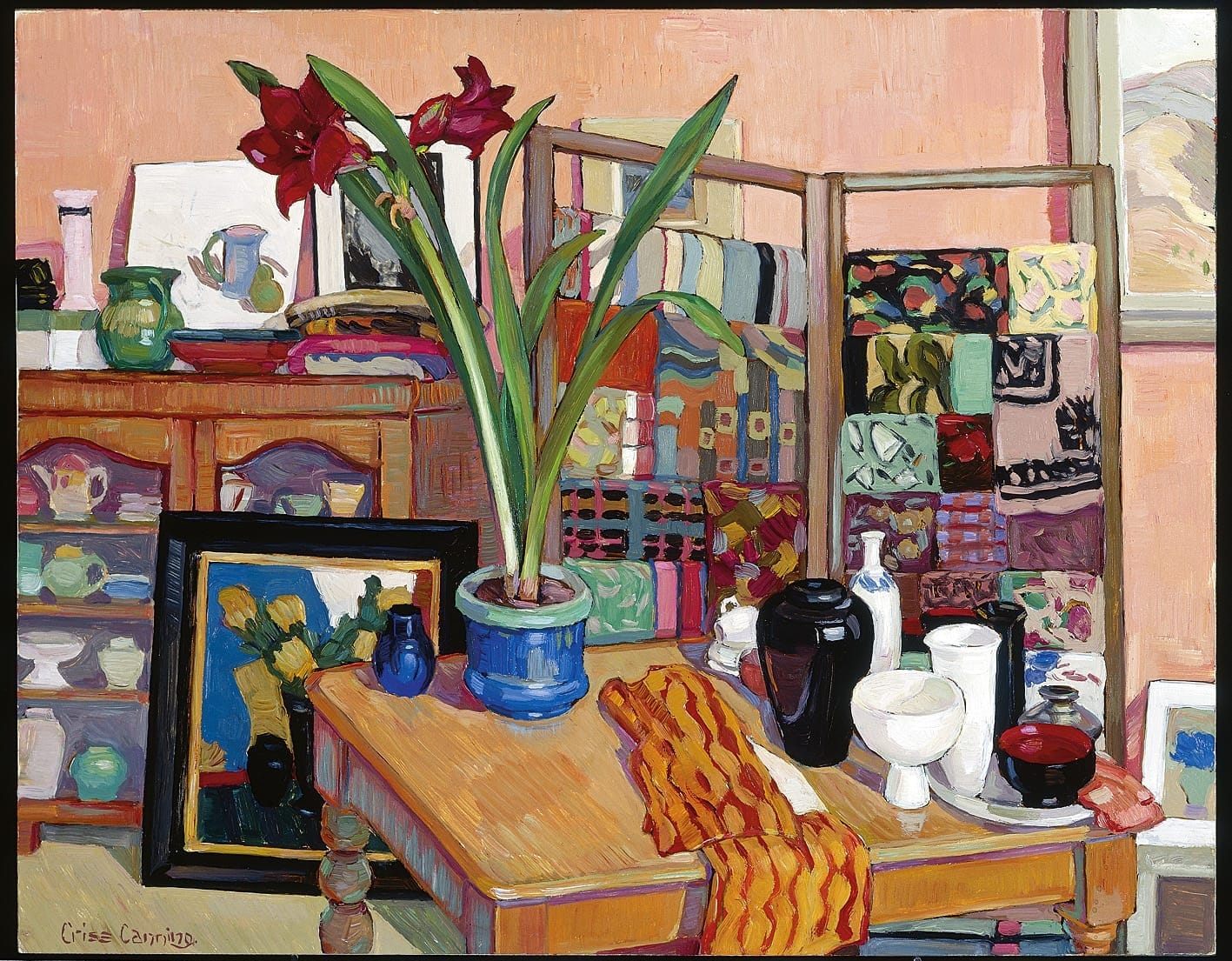
The couple recently bought a 19th century home in the centre of Ballarat, which Canning has renovated, and they’re in the process of moving in. “David just said, ‘You do whatever you like’,” she says. “I’ve really been very playful and brave with colours here. People have walked into this house and said to me, ‘Oh my God, it’s like your paintings’.”
Adjusting to a new studio, new sounds and different light has taken time. Canning says her Lambley studio was much more accommodating of her props. While she was unsure how it would work in the new space, she has now made a studio that is comfortable and makes her happy. Colour-coded vases, bowls and cups line the custom-made shelf on her new studio wall. Kimonos and shells are stacked neatly by the door, and her easel takes centre stage. Music helps drown out construction noise across the road: “Maria Callas to Bob Marley and everything in between.”
“I initially struggled with the change of light that I’m working with now, and I’ve had to turn myself around in a different direction because it just wasn’t working,” she says. “But I’ve got it now. I’m feeling really comfortable.”
While farewelling Lambley will be hard, Canning says she has no concerns about continuing to find inspiration for her art, particularly with Glenn by her side, a constant source of plants and flowers that make their way onto her canvas. “He’s often grown things specifically for me to paint,” she says. “I can be happy anywhere if I’m with David.”
She’s optimistic about the next chapter in her life. “I just think life is what you make it, whether you’re here or there. It’ll be different, but it can still be rich and wonderful.
“I’m so happy that after 60 years of painting I’m still loving it so much.”
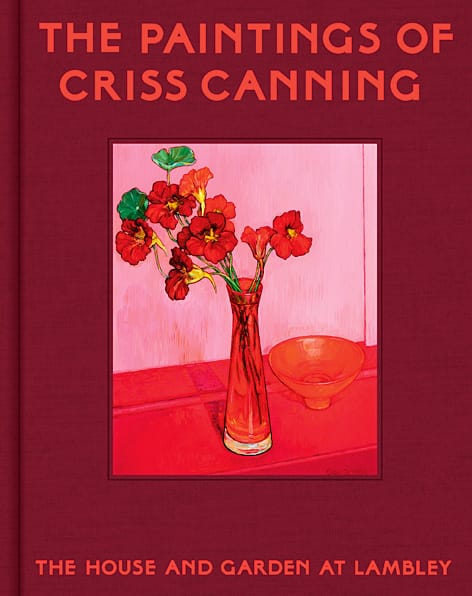
Images extracted from The Paintings of Criss Canning, an illustrated monograph of the artist’s life and art, published by Thames & Hudson Australia, $130.
Artwork and artwork images © Criss Canning.